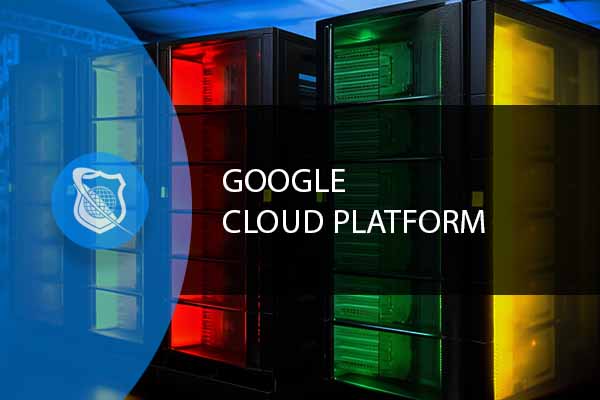Choosing the right database services is pivotal for leveraging Google Cloud Database Options capabilities effectively. This blog aims to elucidate the key aspects and distinctions among four primary Google Cloud database services: Cloud SQL, Cloud Bigtable, BigQuery, and Cloud Spanner. Understanding these services in relation to traditional cloud storage options like Google Cloud Storage helps in discerning their application in various scenarios.
Cloud SQL, Bigtable, BigQuery, and Cloud Spanner: Where Do They Fit?
The decision to use a specific database service over another often boils down to understanding your data’s nature and your project’s requirements. Whether it’s opting for a relational database system like Cloud SQL, delving into the NoSQL realm with Cloud Bigtable, leveraging the analytical prowess of BigQuery, or scaling globally with Cloud Spanner, the choice should align with your data strategy and operational needs.
Google Cloud Platform
Ready to master GCP Certification? Our novice-friendly Google Cloud Platform Training, led by expert Joe Holbrook, is your gateway to success. Gain practical knowledge and become a top-notch cloud engineer. Act now!
Analysis of Google Cloud Database Options
In the pursuit of digital excellence, choosing the right database technology is crucial. Google Cloud offers a variety of database services, each with its unique strengths and optimal use cases. Below, we dive deeper into Cloud SQL, Cloud Spanner, Cloud Bigtable, and BigQuery, providing insights into their pros, cons, and when to use each.
Cloud SQL
Pros:
- Fully Managed Service: Cloud SQL takes away the overhead of database management, automating updates, patches, and backups.
- Support for Popular Databases: It supports MySQL, PostgreSQL, and SQL Server, making it easier for teams to migrate existing applications without changing database engines.
- Integration and Compatibility: Offers seamless integration with other Google Cloud services and compatibility with existing tools and frameworks.
Cons:
- Limited Scalability: While it can scale, it’s not as seamless or robust as Cloud Spanner, especially for global applications.
- Maintenance Windows: Requires occasional downtime for maintenance, although managed by Google.
Use Cases:
- Traditional web applications requiring a relational database.
- Applications migrating from on-premises to cloud with minimal changes.
- Small to medium-sized databases where automatic management and integration with Google Cloud are prioritized.
Cloud Spanner
Pros:
- Global Scalability: Offers horizontal scaling across regions with strong consistency, making it ideal for global applications.
- High Availability: Built for mission-critical applications with multi-regional deployment options ensuring up to 99.999% availability.
- Transactional Consistency: Provides ACID transactions, SQL semantics, and schema database features, combining the best of relational databases with non-relational scalability.
Cons:
- Cost: More expensive than options like Cloud SQL, especially for smaller applications not requiring global distribution.
- Complexity: The features that provide its strengths also introduce complexity in design and operation.
Use Cases:
- Large-scale applications requiring global distribution and strong consistency.
- Enterprises needing a database that can scale without sacrificing transactional integrity.
- Applications that demand high availability and cannot tolerate downtime.
Cloud Bigtable
Pros:
- High Throughput and Scalability: Designed for low latency on large datasets, ideal for real-time analytics and event-driven applications.
- Fully Managed NoSQL Database: Offers a scalable NoSQL database service that manages server provisioning, cluster resizing, and configuration.
- Integration with Big Data Tools: Works well with Hadoop, Dataflow, and Dataproc, making it suitable for big data analytics and operational workloads.
Cons:
- Learning Curve: Requires understanding of NoSQL design principles for optimal use.
- Cost at Scale: While it scales well, costs can grow significantly with usage, especially if not optimized for its pricing model.
Use Cases:
- Real-time analytics and data processing.
- Internet of Things (IoT) applications and time-series data.
- Ad tech, gaming, and financial services applications requiring fast read/write access to large datasets.
BigQuery
Pros:
- Serverless Data Warehouse: Automatically scales to meet the demands of query workloads, with no server management required.
- Powerful Data Analytics: Supports SQL queries for real-time analytics on large datasets, integrating with AI and machine learning tools.
- Cost-Effective: Offers a pay-as-you-go model, allowing users to pay only for the data processed.
Cons:
- Query Costs: Can become expensive for frequent or complex queries over large datasets.
- Learning Curve for Optimization: Requires understanding of how to optimize queries and manage data for cost-effective analysis.
Use Cases:
- Data warehousing and business intelligence, enabling insights from historical data.
- Big data analytics projects requiring complex queries across petabytes of data.
- Machine learning projects needing large datasets for training models.
Each of these Google Cloud database services offers unique advantages tailored to different needs and use cases. Cloud SQL is ideal for traditional applications requiring standard relational databases. Cloud Spanner bridges the gap between the scalability of NoSQL and the transactional consistency of SQL databases, perfect for global enterprises. Cloud Bigtable shines in real-time analytics and large-scale applications needing rapid access to vast amounts of data. Finally, BigQuery serves as a powerful, serverless data warehouse for complex analytics at scale. Understanding these distinctions and evaluating your specific requirements will guide you to the most appropriate Google Cloud database service for your project.

Lock In Our Lowest Price Ever For Only $14.99 Monthly Access
Your career in information technology last for years. Technology changes rapidly. An ITU Online IT Training subscription offers you flexible and affordable IT training. With our IT training at your fingertips, your career opportunities are never ending as you grow your skills.
Plus, start today and get 10 free days with no obligation.
Use Cases and Decision Making
A critical part of this decision-making process involves comparing these services to traditional cloud storage solutions to appreciate their unique advantages. For instance, when contrasting object storage with Cloud SQL or Bigtable, the focal point should be on the specific use cases—whether the need is for a relational database, a NoSQL solution, or a data warehouse for analytics.
The Google Cloud storage options page is an excellent resource for gaining deeper insights into each service’s specifics. It’s not just about choosing Google Cloud but selecting the right service within it, as often, there’s a single best fit for a project’s requirements.
Structured vs. Unstructured Data
Understanding the distinction between structured and unstructured data is foundational. Structured data, characterized by a predefined schema with rows and columns, is where services like Cloud SQL thrive. In contrast, unstructured data, which lacks a predetermined schema and is often generated by humans, might be better suited to solutions like Cloud Bigtable.
Key Considerations
Several factors should influence your choice of database service:
- Data Structure: Is your data structured, semi-structured, or unstructured?
- Availability and Compliance: What are your requirements for data availability and regulatory compliance?
- Cost and Performance: How do you balance the cost against performance and latency requirements?
- Migration Needs: Consider the ease of migrating your existing data into the Google Cloud platform.
Decision Tree and Service Differentiation
Google provides a decision tree to aid in selecting the right service based on data structure, relational needs, and other criteria. Understanding the nuances between services like Bigtable and BigQuery can be initially confusing due to their naming similarity. However, recognizing BigQuery as a serverless query service and Bigtable as a high-throughput NoSQL data warehouse clarifies their distinct roles.
Preparing for Implementation
Awareness of the differences between structured and unstructured data, alongside familiarity with the core functionalities of Cloud SQL, Cloud Spanner, Bigtable, and BigQuery, is crucial. For instance, Cloud SQL supports MySQL, PostgreSQL, and Microsoft SQL Server, offering a managed relational database service. Cloud Spanner stands out for its global scalability and transactional consistency, offering a robust solution for applications requiring horizontal scaling beyond traditional relational databases’ capabilities.

Get Ahead In Cloud Computing
At ITU, we offer an exclusive Cloud Computing training series designed to prepare you for certification and/or to help you gain knowlege of all Cloud based platforms including AWS, Azure and Gooogle Cloud.
Get access to this exclusive Cloud Computing Training today.
Conclusion
Choosing the right database or data warehouse service in Google Cloud is a nuanced decision that impacts your project’s success. By understanding each service’s strengths and best use cases, you can align your data strategy with the most suitable cloud database solution, ensuring scalability, performance, and cost-effectiveness. As you navigate these options, consider your data’s structure, your application’s requirements, and the broader context of your digital transformation journey.
Key Term Knowledge Base: Key Terms Related to Google Cloud Database Options
Understanding key terms associated with Google Cloud Database Options is crucial for professionals and enthusiasts navigating this cloud computing platform. It enables effective communication, better project planning, and informed decision-making in deploying and managing database solutions in the cloud.
| Term | Definition |
|---|---|
| Cloud SQL | A fully managed relational database service that supports MySQL, PostgreSQL, and SQL Server, offering automated updates, patches, and backups. |
| Cloud Bigtable | A fully managed NoSQL database service designed for low latency on large datasets, ideal for real-time analytics and event-driven applications. |
| BigQuery | A serverless, highly scalable data warehouse that supports SQL queries for real-time analytics on large datasets, with a pay-as-you-go pricing model. |
| Cloud Spanner | A fully managed, scalable, relational database service that offers global distribution and strong consistency, combining the benefits of relational database structures with non-relational horizontal scale. |
| Fully Managed Service | A cloud service model where the cloud provider manages the technical, operational, and maintenance aspects of a service, allowing users to focus on their applications rather than infrastructure. |
| Scalability | The ability of a system to handle increased loads by adding resources, either horizontally (adding more machines) or vertically (adding more power to existing machines). |
| NoSQL | A category of database management systems that does not adhere to the traditional relational database management system (RDBMS) structure. Optimized for insert and retrieval speeds at large scales. |
| ACID Transactions | A set of properties (Atomicity, Consistency, Isolation, Durability) that ensure transactions are processed reliably in a database system. |
| Serverless Computing | A cloud computing execution model where the cloud provider dynamically manages the allocation and provisioning of servers. |
| Data Warehouse | A system used for reporting and data analysis, acting as a central repository of integrated data from one or more disparate sources. |
| Horizontal Scaling | Adding more machines to a pool of resources to handle increased load, as opposed to adding more power (CPU, RAM) to an existing machine (vertical scaling). |
| Real-time Analytics | The process of analyzing data as soon as that data becomes available, enabling immediate decision-making. |
| IoT (Internet of Things) | The network of physical objects—devices, vehicles, buildings, and other items—embedded with sensors, software, and other technologies for the purpose of connecting and exchanging data with other devices and systems over the internet. |
| Data Processing | The collection and manipulation of items of data to produce meaningful information. |
| Machine Learning | A subset of artificial intelligence (AI) that provides systems the ability to automatically learn and improve from experience without being explicitly programmed. |
| Data Encryption | The process of converting information or data into a code, especially to prevent unauthorized access. |
| Identity and Access Management (IAM) | A framework of policies and technologies for ensuring that the proper people in an enterprise have the appropriate access to technology resources. |
| Compliance | Adherence to laws, regulations, guidelines, and specifications relevant to its business processes. |
| Data Replication | The process of copying data from one location to another to ensure consistency between redundant resources to improve reliability, fault-tolerance, or accessibility. |
| Schema | The structure of a database system, described in a formal language supported by the database management system (DBMS). |
| Query Optimization | The process of selecting the most efficient query execution plan from among the various strategies possible for a given query. |
These terms provide a foundational understanding for anyone working with or interested in Google Cloud Database Options, facilitating more informed choices and strategies in cloud database management and application development.
Frequently Asked Questions Related to Google Cloud Database Options
What are the main differences between Cloud SQL and Cloud Spanner?
Cloud SQL is a fully managed relational database service that supports MySQL, PostgreSQL, and SQL Server, designed for applications that require traditional relational databases with a straightforward scalability model. It’s best suited for standard web applications with moderate scaling requirements.
Cloud Spanner, on the other hand, is a fully managed, scalable database service designed for global applications, offering both horizontal scalability and strong consistency across global regions. It uniquely combines the benefits of relational database structures with non-relational horizontal scale, making it ideal for applications that require both features.
When should I use Cloud Bigtable instead of BigQuery?
Cloud Bigtable is optimized for low-latency read/write operations and is ideal for real-time analytics and operational workloads, especially where the workload involves high throughput and scalability for large volumes of data or rapidly changing datasets.
BigQuery is a serverless, highly scalable, and cost-effective multi-cloud data warehouse designed for business agility. It’s best used for analyzing large volumes of data with SQL queries in a serverless environment, making it perfect for data warehousing, big data analytics, and machine learning projects.
Can I use SQL queries with Cloud Bigtable?
No, Cloud Bigtable is a NoSQL database service that does not support SQL queries directly. It is designed for accessing large volumes of data with low latency. You would use client libraries provided by Google Cloud in languages such as Java, Go, Python, etc., to interact with Cloud Bigtable. For SQL-like capabilities on non-relational data, BigQuery might be the better option, and it can even be integrated with Bigtable for analytics purposes.
How does Google Cloud ensure the security of its database services?
Google Cloud provides robust security features across all its database services. These include data encryption at rest and in transit, identity and access management (IAM) controls to define who can access your data, private connectivity options like VPC peering, and compliance certifications to ensure data is handled according to global standards. Additionally, users can leverage advanced security tools such as Cloud Identity-Aware Proxy and VPC Service Controls for enhanced security postures.
Is it possible to migrate from an on-premises database to Google Cloud databases without downtime?
Yes, Google Cloud offers services and tools designed to facilitate seamless migration from on-premises databases to its cloud database services with minimal to no downtime. Tools like Database Migration Service (DMS) support migrations to Cloud SQL with continuous data replication, ensuring that your applications remain operational during the transition. Planning and executing a migration strategy with considerations for data synchronization, testing, and validation phases are crucial for a successful migration with minimal impact on operations.
























